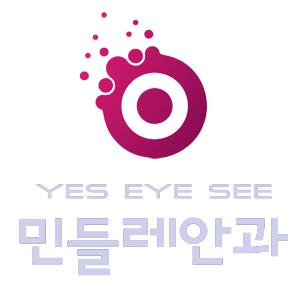Comparative analysis of visual outcomes with 4 intraocular lenses: Monofocal, multifocal, and extended range of vision
민들레 안과와 알아보는 다초점, 연속 초점, 단초첨 백내장 수술 비교

최근 백내장 수술 기법이 발달하면서 백내장을 단순히 백내장의 제거 수술이 아닌 굴절수술로 인식하는 면이 있습니다.
대전 민들레 안과도 노안 백내장(프리미엄 백내장) 수술을 많이 하는 편입니다.
환자분들도 예전과는 다르게 먼저 물어보시기도 하고 수술을 원하시는 분도 점점 늘어가는데요.
한가지 중요한 점은 노안 백내장의 경우 하실 수 있는 적응에 들어가시는 분만해야지
무리하게 수술을 진행하다 보면 가격이 꽤나 비싼 기 때문에 환자분의 만족도도 떨어지고 추후 문제의 소지가 생길 수 있습니다.
최근 한 연구에 따르면 미국에서의 백내장 재수술 2위가 노안 백내장 수술 후 만족도였다고 합니다.
그래서 대전 민들레 안과가 준비한 연구결과 입니다.
J Cataract Refract Surg 2018; 44:156–167
저번 달 미국 백내장 굴절 학회지에 실린 따끈한 연구 결과인데요
렌즈 4가지 종류를 가지고 수술 후 시력, 대비 감도, 시력실 등에 관해 보고를 했습니다.
우선 연구 디자인에 사용된 렌즈 종류를 보면
Tecnis monofocal – aspheric 1-piece (monofocal IOL) (Abbott Medical Optics, Inc.),
Tecnis Symfony (extended-range-of-vision IOL) (Abbott Medical Optics, Inc.)
Restor apodized diffractive – refractive +2.5 diopter (D) (+2.5 D IOL) (Alcon Laboratories, Inc.)
Restor apodized diffractive – refractive +3.0 D (+3.0 D IOL) (Alcon Laboratories, Inc.)
대전 민들레 안과에서 모두 사용 중인 렌즈네요…
저도 결과가 궁금해지네요
22mm 이상의 눈에서는 SRK/T 공식을 나머지 경우는 Holladay 공식을 사용했습니다.
이 연구가 맘에 들었던 결정적 이유는 결과 측정 방법입니다.
너무 맘에 드는 관계로 원문을 옮깁니다.
Binocular UDVA and CDVA were measured using the Early Treatment Diabetic Retinopathy Study (EDTRS) charts under
photopic conditions and 100% contrast (ESV-3000 ETDRS System, Vectorvision, Inc.) at 4 m. Binocular uncorrected (UIVA), corrected (CIVA), and distance-corrected (DCIVA) intermediate visual acuities were measured using EDTRS near acuity charts (Sloan EDTRS format near vision, Precision Vision) with 100% contrast at 60 cm. Binocular UNVA, and corrected (CNVA) and distancecorrected (DCNVA) near visual acuities, were measured with the same near chart at 40 cm.
The visual performance was also evaluated by measuring the distance contrast sensitivity function under photopic conditions (85 candelas [cd]/m2) with the CSV-1000 device (Vectorvision, Inc.) and by obtaining the defocus curve. The latter provides an objective measure of expected vision at different distances. It was evaluated by assessing the binocular visual acuity at 4 m. Measurements were performed after correcting the patients for distance visual acuity in both eyes while viewing a distant chart.
This was the “zero” mark and represented a peak for all IOLs tested. Correction for distance was necessary to eliminate variability caused by residual refractive errors. To produce defocusing, a progression of lenses with an increment of 0.50 D was consecutively used 1 at a time. The range of this sequence was from -0.50 to -4.0 D. At each step, visual acuity was measured. The relationship between lens vergence and distance defocus was essential to interpreting the resultant defocus curve. Viewing a distant object through a -0.50 D lens is optically equivalent to viewing an object at 2 m, and viewing a distant object through a -4.0 D lens is optically equivalent to viewing an object at 25 cm.
An objective analysis of the ocular optical quality was performed with the Optical Quality Assessment System (OQAS)
(Visiometrics SL). The OQAS is a validated system based on a double-pass technique that allows the analysis of visual quality in human eyes including the measurement of the Strehl ratio and the root mean square (RMS) for a pupil diameter of 4.0 mm. Last, the subjective perception of glare and spectacles required for near and intermediate vision were evaluated using 2 specific subscales (near vision and activity limitation) of the National Eye Institute Refractive Error Quality of Life (NEI RQL) instrument.

결과적으로 근거리용 다초점에 비해서 새로 개발된 광범위 렌즈가 원거리 더 잘 보이며
광범위 렌즈와 중간거리용 다초점렌즈는 중간거리에서 비슷한 결과를 보였다는 내용이었습니다.
진료시간
| 평일 | 9:00 – 18:30 |
| 토요일 | 9:00 – 13:00 |
| 일요일/공휴일 | 휴진 |





